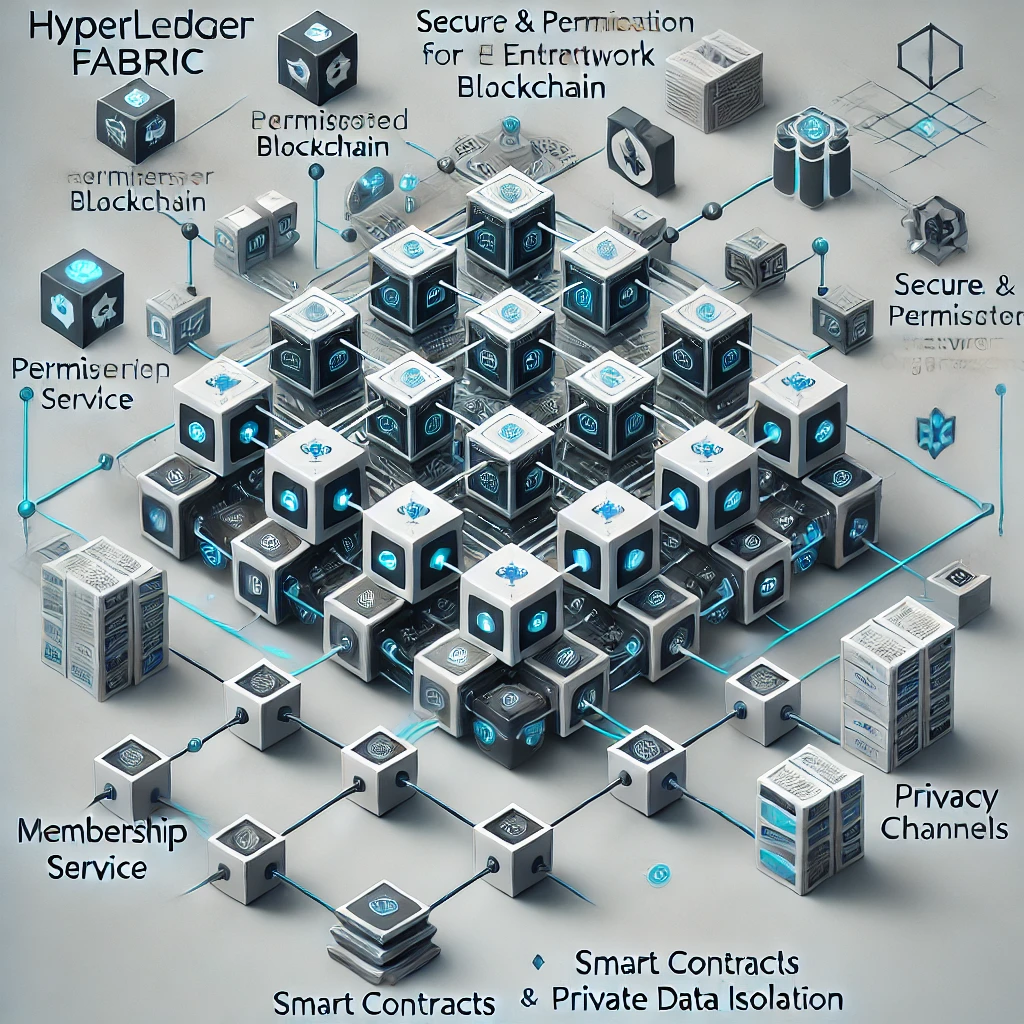Hyperledger Fabric Explained: A Guide to Blockchain for Business
 Nagvekar
NagvekarBlockchain technology often brings to mind cryptocurrencies like Bitcoin and Ethereum, but did you know that blockchain is also transforming businesses in various industries? Hyperledger Fabric, a blockchain framework by The Linux Foundation, provides a unique and adaptable solution for enterprises, enabling secure, transparent, and collaborative business processes without the need for cryptocurrency.
In this article, we’ll break down what Hyperledger Fabric is, why it’s used, when it’s not ideal, and how businesses can benefit from it. By the end, you’ll understand how Hyperledger Fabric empowers businesses with blockchain without the complexity of public cryptocurrency networks.

What is Hyperledger Fabric?
Hyperledger Fabric is an open-source blockchain framework designed specifically for enterprise use. Unlike public blockchains, Hyperledger Fabric offers a permissioned network, where participants are known and trusted by the network. This allows companies to keep certain data confidential while still using blockchain’s benefits like immutability and decentralized control.
Key Features of Hyperledger Fabric:
Permissioned Access: Only approved participants can join, making it secure for sensitive business transactions.
Modular Design: Fabric’s structure is customizable, allowing businesses to select only the components they need.
Smart Contracts (Chaincode): Businesses can automate processes by writing custom smart contracts in languages like Go and Java.
Privacy and Confidentiality: Fabric supports private data collections, enabling specific data to remain confidential within certain groups.
Why Use Hyperledger Fabric?
Hyperledger Fabric is particularly valuable in industries that need secure and collaborative networks, such as finance, healthcare, and supply chain management. Here’s why organizations choose Fabric:
Enhanced Security and Control: With Fabric, only authorized members can access the network, preventing unauthorized actions.
Transparency with Privacy: Fabric provides a balance by offering transparency in transactions while allowing data privacy where necessary.
Efficient Supply Chain Management: Fabric enables real-time tracking of goods, creating a shared record that improves visibility and reduces errors.
Reduced Cost and Time: Automating processes and cutting intermediaries saves time and costs, which is a direct benefit for businesses.
Example Scenario:
Supply Chain Tracking
Imagine a coffee company using Hyperledger Fabric to monitor its beans' journey from farm to cup. Fabric allows all involved parties—farmers, transporters, and retailers—to securely access information about each stage, ensuring that quality and authenticity are maintained. Consumers can verify the product's source, adding trust to the brand.
Healthcare Data Sharing
In the healthcare sector, sharing patient data across hospitals, labs, and specialists can improve patient care, reduce duplication, and ensure faster diagnoses. However, privacy, security, and regulatory compliance (like HIPAA in the United States) are critical, meaning that data sharing must be carefully controlled.
Hyperledger Fabric enables healthcare providers to share patient data securely and transparently, ensuring only authorized parties access sensitive information. By setting permissions, each hospital or provider can control what data they share and with whom. Fabric’s modular architecture allows specific privacy settings and channels to restrict access to data as needed, supporting compliance with healthcare regulations.
Where Hyperledger Fabric Should Not Be Used
Hyperledger Fabric is not always the best choice. Here are situations where it may be less suitable:
Decentralized, Trustless Environments: If your application doesn’t require trusted parties or restricted access, a permissioned blockchain may add unnecessary complexity.
Public Data Sharing: For applications requiring transparent data accessible to everyone (e.g., open-source projects or decentralized finance), a public blockchain might be more suitable.
Cryptocurrency Applications: Hyperledger Fabric does not have a native cryptocurrency or token mechanism, so it’s not ideal for applications focused on digital currency.
Conclusion
Hyperledger Fabric empowers businesses by offering a secure, collaborative platform without needing a public, open blockchain. With a permissioned setup, modular design, and privacy features, Fabric is transforming industries from finance to supply chains.
Whether it’s keeping data secure or enabling efficient workflows, Hyperledger Fabric provides a practical approach to blockchain for business, helping enterprises adopt blockchain technology without unnecessary complexity. As blockchain evolves, frameworks like Fabric are making it accessible, customizable, and ready for the future of business.
Subscribe to my newsletter
Read articles from Nagvekar directly inside your inbox. Subscribe to the newsletter, and don't miss out.
Written by

Nagvekar
Nagvekar
Seasoned technology leader Nagvekar boasts a robust background in managing complex IT projects and fostering innovations in data-centric, technology-driven environments. With a toolkit rich in diverse programming languages, web services, and machine learning expertise, Nagvekar excels at optimizing IT operations and synchronizing tech strategies with overarching business goals. His specialization in scalable microservices and enhanced code security significantly elevates operational efficiency and fortifies cybersecurity. Passionately committed to catalyzing growth and continual improvement, Nagvekar strategic leadership and technological acumen drive real change and development.